嘉南藥理大學資訊多媒體應用系特聘專技教授兼系主任
Professor and Chairman of Department of Applied Informatics & Multimedia, Chia Nan University of Pharmacy & Science
Article of famous designers
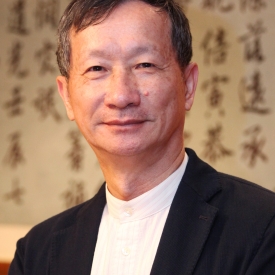
嘉南藥理大學資訊多媒體應用系特聘專技教授兼系主任
Professor and Chairman of Department of Applied Informatics & Multimedia, Chia Nan University of Pharmacy & Science
1. Introduction
As a small nation in the global village, Taiwan is politically unable to be the equal of such developed countries as European countries, the USA and Japan. However, in an age in which information communication knows no boundaries, and with the rise of the global soft power of design that makes room for creativity to soar through the international stage of design, its power of creative design has made its impact felt in the world, making dazzling achievements. In particular, the brilliance of the senior high school and university students has taught advanced nations in design in the world that it is a force to be reckoned with. With respect to the design stages organized for Taiwan’s students, the YODEX(Young Designers Exhibition) held annually in May has stepped into its 35th year, while the design contest for students has also entered the 16th year; whether in terms of the scale or the number of participating departments and students, it is par excellence of its kind in the world. Although the TISDC(Taiwan International Student Design Competition) has only been held for eight years since 2008, the international reputation of its jury, its prize money, number of participants, and the participation rate of international students, have all found favor with young design students in the world; also, Taiwan’s young students in the design field have been immensely successful, winning many prizes.
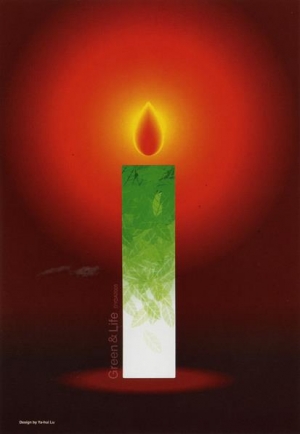
This author, after graduating from the college of art and discharged from the armed forces, had been working in the advertising planning and design fields until joining the Department of Visual Communication Design, Tainan Women's College of Arts and Technology(now as Tainan University of Technology) in 2003 with Mr. Yu, Ming-Lung and Mr. Lin, Hung-Tse. From 2007 to 2014, I was the department head and director. While working as a teacher (2003-2007 and 2014-2015,) under my supervision, my students joined the YODEX and won a total of 2 golds, 2 silvers, 2 bronzes, 6 honorable mentions, and 5 manufacturer-sponsored special awards; under my leadership as the department head (2007-2014), our department won 3 golds, 6 silvers 29 bronzes, 22 honorable mentions, and 15 manufacturers’ awards and the Special Award in package design; altogether, 106 pieces of work were shortlisted, out of which 76 were awarded prizes. In the 12 years from 2003 to 2014, there were four times (2005, 2007, 2011-2012) in which the Department of Visual Communication Design came on the top in terms of the number and categories of awards won, and for five times (2004, 2006, 2010, 2013-2014) ranked first among the universities of technology in Taiwan! In view of the remarkable achievements of the students of the Department in Taiwan, the vision of “rooted in Taiwan, eyes on Asia, and aiming at the world” has always been in my mind
In 2005, my students-Lu, Ya-Hui, under my supervision, participated in the Technological University and College Graphic and Advertising Design Contest organized by the Ministry of Education with their term assignment “Green & Life,” which was awarded the merit award in environment conservation, and also selected in TPT(Trnava Poster Triennial, Slovak). From then on, I launched the department on another path of taking part in international contests. In the period as the head of department, in 2008, the Packaging Design for Handcrafted Soaps by the 5-year junior college student- Long, Shan-Ling was shortlisted for the iF Packaging Design Award, and got Project IDC’s bonus NT$50,000. Tainan University of Technology ranked 41st in the iF Ranking of the World’s Top Hundred Universities.


2. Participation and Learning in Project IDC
At the same time, I personally took part in “Award Incentive Program for Encouraging University/College Students to Participate in International Art and Design Contests-Project IDC” , initiated by the Ministry of Education, from the memorandum on the project in 2005, expert research and discussion, and holding pilot program to organizing annually since 2006 reviews of rewarding prize-winning students, prize presentation and talks by world famous masters across the country, industry-academy design summit, and sharing of experience by prize-winning students, etc. I also participated in on-the-spot learning and experience sharing. So in implementing the related projects of the government, I will timely bring related experience into the projects. For the “Sub-project for the Cultivation and Improvement of Talents in Cultural Creativity and Digital Design 2, Project for Subsidizing the Cultivation and Improvement of Talents in Fields with Important Characteristics, Ministry of Education 2008: Project for the Cultivation and Improvement of Visual Design Elites”, which was held for 4 terms with 225 enrolments, the awards won included TIGDA(Taiwan International Graphic Design Award), 11TH IBP(The International Biennale of Poster in Mexico), Golden Bee(Moscow Global Biennale of Graphic Design), 2011 TIPDA(Taiwan International Poster Design Award), TOP 100 of the iF Concept Award. Students- Lin, A-Lian and Gao, Ting-Ting participated in various international contests; in 2010, they won the gold award and 100,000 yen of International Competition, Nagoya Design Do!-Design to Empower Tomorrow, and through Project IDC, were granted the first class prize money of a million NTD.
In 2013, I implemented the “Teaching Excellence Project of ‘Interactive Growth of Learning and Thinking, Cultural Creativity Leading the Way’ of the Tainan University of Technology: Sub-project B4 of ‘Cultivating Talents for Competition, Making a Name in the World’,” held for 4 terms with 219 enrolments. The works of the students won the following awards. Of the works entering YODEX, 21 were shortlisted for 19 divisions, and won 21 awards that included 1 silver, 8 bronzes, 10 merits and 2 manufacturers’ special awards. In the National Practical Projects Contest for Technological and Vocational College Students 2013, the works of our students got the first and second runners-up and an award of merit; 1 OTOP gold award; the grand award, jury award, a bronze award, and 10 entries in the judges’ list in the East China Design Award; 6 entries shortlisted for the Macau Design Biennial; 1 award of merit from the “China Dream” poster contest held by the Chinese Packaging Design Association, 2013. The same project was implemented in 2014 in 3 terms with 195 enrolments; 2 were listed in the iF TOP 100 and 300 respectively; 1 merit award of TIGDA, 2013; 2 entries in the judges’ list of TISDC, 2013; 21 entries shortlisted for 20 divisions in YODEX 2013, and won a total of 22 awards including 1 silver, 2 bronzes, 12, 6 manufacturers’ special awards and I Stars Special Award in package design; in the National Practical Projects Contest for Technological and Vocational College Students 2014, the works of our students came first, second and third; 1 OTOP gold award; and a silver award and 3 judges’ list awards in the National University and Middle School Student Marine Culture Creative Design Contest.
The primary aim of the detailed description above is to explain the organization of the study camp for design elites through the experience of participating in the Project IDC which international and domestic experts and scholars from both the academic and industrial sectors were extensively invited to offer instruction to students in person, with a view to broadening their horizons. In addition, students’ works have been collected for joining all important contests both within and without Taiwan, which has been very fruitful. It has not only commenced the participation of students of Tainan University of Technology in international competition, but also created a path along which the Department of Visual Communication Design can continuously expand itself.
3. Experience sharing in supervising designs
The STOP KILLING WHALES of the “Training Class of the Project for Cultivating and Improving Talents of Visual Design Elites” of 2009 takes the Japanese national flag and whales as its subject. The blood of the hung whale left on the surface of the sea and the seawater forms into the national emblem of Japan, which is like telling that Japan was facing the question of how to strike an equilibrium between morality and interests in its illegal whaling, an issue worth reflecting. The original design had the title enlarged, and arranged in horizontal format on the top left, framed by bold black lines. In reviewing this work, I had the following suggestion: the main title on the top left and Japan’s national emblem below formed two visual focuses, which might lead to confusion on reading it; so the words of the original title could be arranged vertically, which gave the impression of a suspended rope when placed in the upper part. Also, the intention of surrounding the title with frames was to highlight the theme poster, but had the effect of producing a cramping sense in the picture instead. Removing the frames would help focus on Japan’s national emblem, highlighting the relations of the killing of whales with Japan. After revision, that work received the award of merit in TIGDA 2009 and shortlisted for the Golden Bee 2010.
There seems to be no fixed principle for using freehand drawing, computer graphics, illustrations or photographs in presenting a design. How good creativity is to be expressed through appropriate mediums is a question that students have to deeply ponder when exercising their creative thinking. The student- Chen, Rou-Ya was already trapped in a bottleneck in the stage of creative thinking, in the discussion I suggested the following: using the food crisis as the subject for creative thinking; several pairs of chopsticks might be placed on the picture and the last grain of rice at the center to present the sense of crisis of scramble for food; and photographing be used as the presentation technique to present it. The next day, the image presented in light of the results of discussion was like the final product, only that the ten pairs of chopsticks were all of the same color with a grain of rice scrupulously placed at the very center. I joked by saying that the image was like family members sitting around for their reunion dinner, and hence virtually impossible to convey the sense of crisis of food scrambling; the chopsticks must be in different colors to be able to represent different people, and the rice at the center could also be broken into three or four pieces; only thus could the urgent crisis of scrambling for the remaining grain of rice be brought out. Finally, the picture was altered and titled Food Shortage: the army of chopsticks from all corners eyed covetously on the rice, now smashed into pieces, at the center, which imparts the distressing sense of food shortage. This work was only presented by means of photography, simple and full of tension, and was selected in 11th IBP. This once again confirms that as long as it can present good creative ideas, instant camera is the simplest and easiest form of presentation.
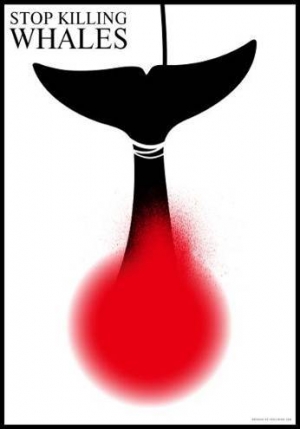
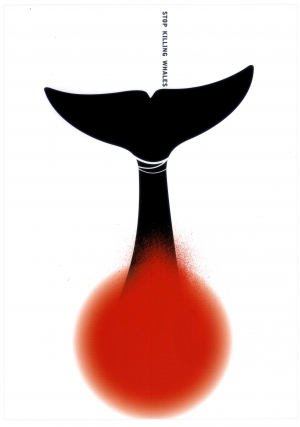
The printed first draft of The Truth about Loch Ness by Huang, Wei-Zhe was almost identical with its later version, only that the sky in the upper part was left blank, while the elephant was enlarged and placed in the middle and lower parts of the picture. I discussed the first draft with Mr. Leo Lin, Chun-Liang of National Taiwan Normal University and Mr. Wu Ren-ping of National Kaohsiung Normal University and reached a consensus: the image of the elephant located at the middle and lower parts of the picture was too large, generating the impression that it was bathing in a pond and completely failing to convey the sense of the crisis of global warming. If the elephant was made smaller and moved closer to the part above the water, this would better present the water that is both deep and wide after global warming. What was presented in the revised work was the legendary mythical monster Loch Ness, which might reveal its true colors in a new way to the world as a result of rising sea level due to global warming; the monster that appeared as blank space, on closer scrutiny, was found to be an ambiguous image presented by an elephant trunk. By the way, at that time Leo Lin, Chun-Liang proposed to compare a piece of creative idea in his own blog with this similar work of identical tint, and thought that the student should not have seen his work; both shared similar creative ideas but differed in the form of presentation, and this should be seen as great minds thinking alike. As things turned out, the student entered a competition and was awarded a prize earlier, which means known to the public before Mr. Lin received his from ADC, New York. This elicited a great dispute among the design circles in Taiwan, which suspected Lin of plagiarism in his creation; this is obviously unfair. As regards this incident, Mr. Wu can also be a witness, and I would like to take this opportunity to clarify the whole matter. The revised work, in addition to being on the judges’ list of IBP 2010 and receiving the award of merit of TIPDA 2011, was also listed in the TOP 100 of the iF Concept Award.
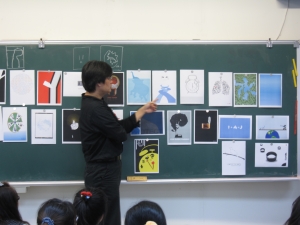
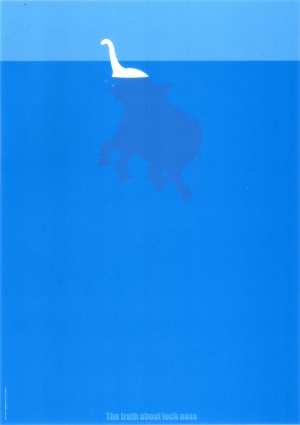
In 2013, I made use of the theme of TISDC, “Circle of Life”, as a term assignment of graphic editing in order to stimulate the creative thinking of students. Initially, Lin, Yi-Min’s work were only two drafted designs of a series cast in horizontal format; I suggested refining them by merging the two horizontal lines into one, which produced a sensation of one covering from above and the other supporting from below. The next week another draft appeared, with the image in vertical format of catching butterflies; I was of the opinion that the sensation produced by the juxtaposition of the original designs would disappear if this was added, and suggested producing another design in vertical format as the second series. Until the second term in 2014, as a piece of classwork supervised by Mr. Lai, Yue-Xing, these three designs were still treated as a series on entering a contest. Catching for the Sake of Money?, which intertwines the bodies of a turtle, butterfly and pangolin with the catching net, expresses the selfish interest and likes of humans, showing that the behavior of catching them for trade and exhibition has engendered their crisis of survival. These three pieces of work won the visual design bronze award in the “Life, Life” of TISDC 2014. In my view, the expression of creativity and presentation techniques are of course decisive factors in winning awards, but for works as a series, the manner of display them will also affect the perceptions of the judges. I was invited in 2011 to serve as a judge of 8th MDB(Macau Design Biennial), and truly appreciated the fact that in a keen and close contest, there is no room for the slightest mistakes (for example, precision, consistency of presentation, etc. ;) otherwise, if the author is over-ambitious, trying to present all the works at one stroke without knowing to make selection, it will bring more harm than good, resulting in opposite effects.
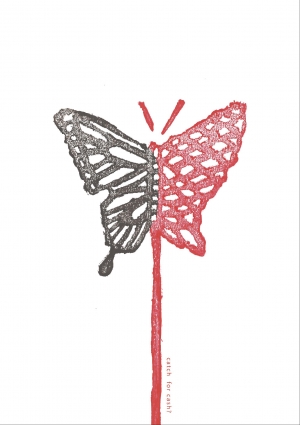
4. Conclusion
In early years, the cultivation of the design creativity of Taiwan’s students was all implicit. Except the various internal contests like YODEX, they rarely had the opportunity to compete in large scale contest. Over the past ten years, the efforts of Project IDC have stimulated the active participation of students of colleges of design; together with the TISDC, the successive winning of awards by Taiwan’s university and college teachers and students in various important international contests, and the dazzling achievements of Taiwan’s students since 2008 that have shaped the superior competitiveness of Taiwan, design has already virtually become an important weapon in displaying the national power of Taiwan.
“With the thought comes the imagination, with the diligence come the research and creation.” It is a delight to see that over the past ten years or so, Taiwan’s students have been shining in the design field; it is hoped that they can continue to give impetus to their creativity; while rooted in Taiwan, they are able to have their eyes on Asia and the world in their mind, absorbing valuable experience in various international contests, and measuring themselves in terms of international design competition.